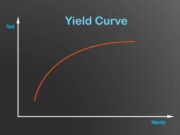What is ‘Underlying Mortality Assumption’
Projections of expected death rates used by actuaries to estimate insurance premiums and pension obligations. Underlying mortality assumptions are based on mortality tables, which are statistical tables of expected annual mortality rates. Because of the critical importance of the underlying mortality assumption, actuaries have to follow guidelines set by pension and insurance regulators in deciding on an appropriate assumption.
Also called the mortality assumption.
Explaining ‘Underlying Mortality Assumption’
The underlying mortality assumption is a key variable in estimating life expectancies, which in turn determines the cost of insurance for an insurer and the long-term obligations of a pension fund. If the underlying mortality assumption is too low, a life insurer may underestimate the actual cost of insurance and may have to pay out more death benefit claims than it had forecast. Conversely, if the underlying mortality assumption is too high, the actuary may underestimate life expectancies of the pension-plan members and hence the long-term obligations of the pension fund.
Underlying Mortality Assumption FAQ
What is an actuarial factor?
What is an actuarial calculation?
What is an actuarial gain or loss?
How do you account for actuarial gains and losses?
What are mortality tables used for?
Further Reading
- On systematic mortality risk and risk-minimization with survivor swaps – www.tandfonline.com [PDF]
- Killing the law of large numbers: Mortality risk premiums and the sharpe ratio – onlinelibrary.wiley.com [PDF]
- Modelling and management of mortality risk: a review – www.tandfonline.com [PDF]
- Mortality rates as an indicator of hospital quality – search.proquest.com [PDF]
- Securitization of catastrophe mortality risks – www.sciencedirect.com [PDF]
- Unobserved heterogeneity can confound the effect of education on mortality – www.tandfonline.com [PDF]
- Natural hedging of life and annuity mortality risks – www.tandfonline.com [PDF]
- Stochastic mortality in life insurance: market reserves and mortality-linked insurance contracts – www.sciencedirect.com [PDF]
- Valuation and hedging of life insurance liabilities with systematic mortality risk – www.sciencedirect.com [PDF]

































